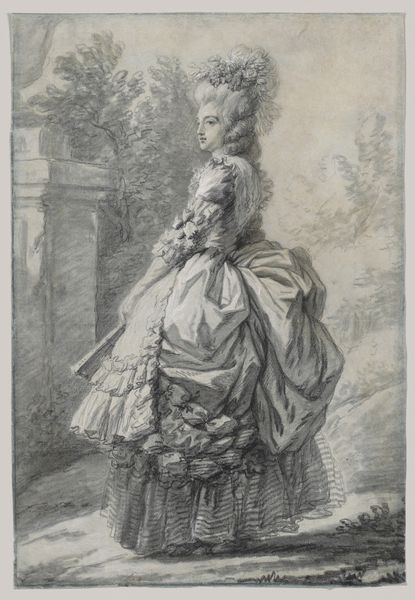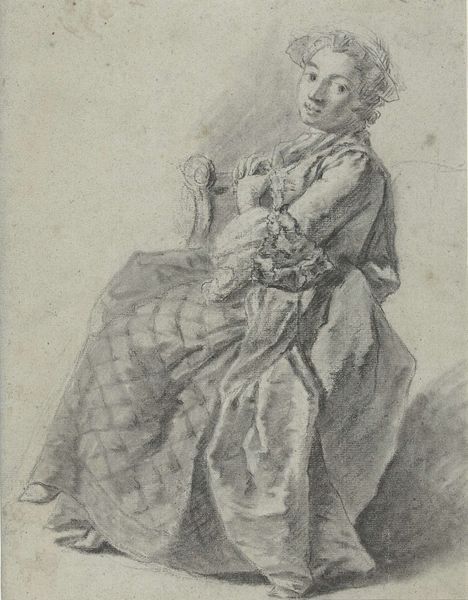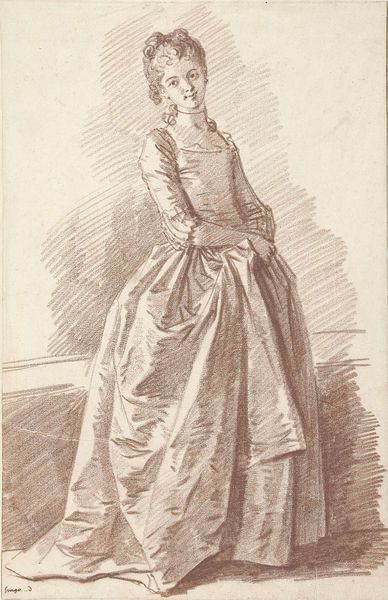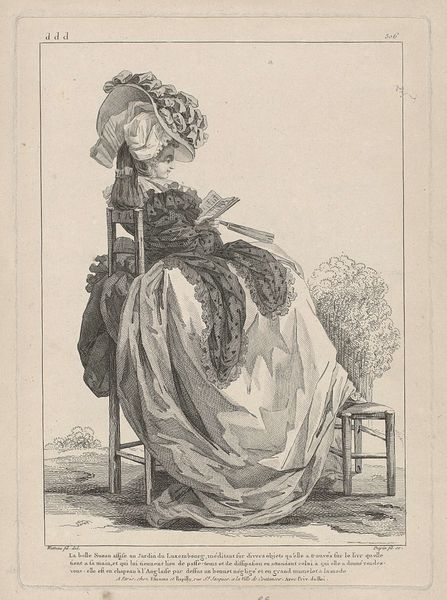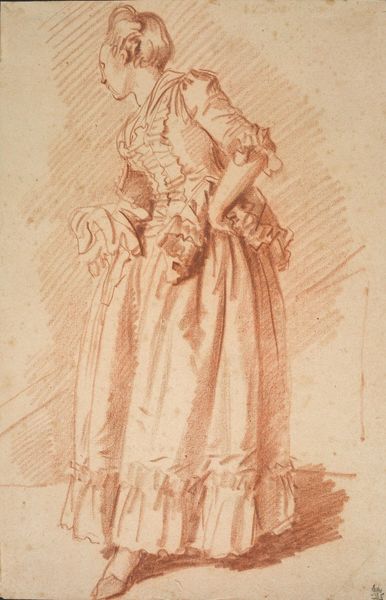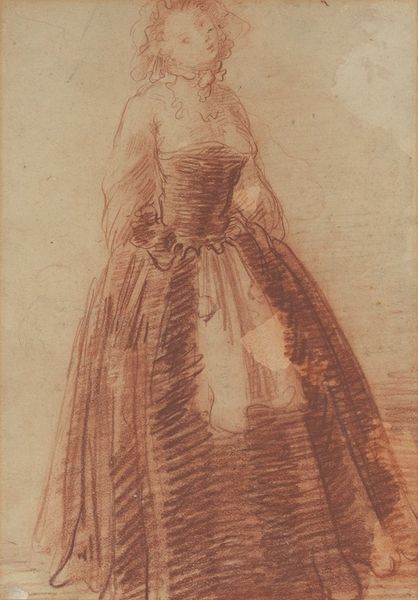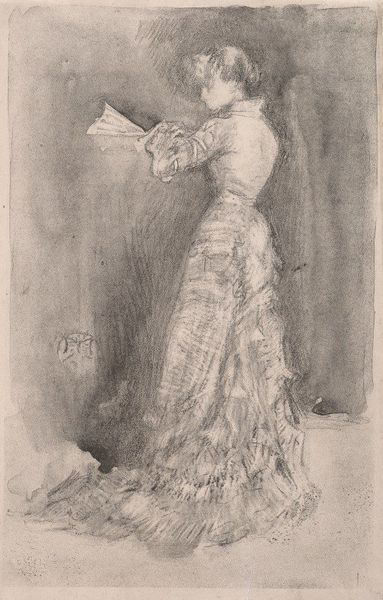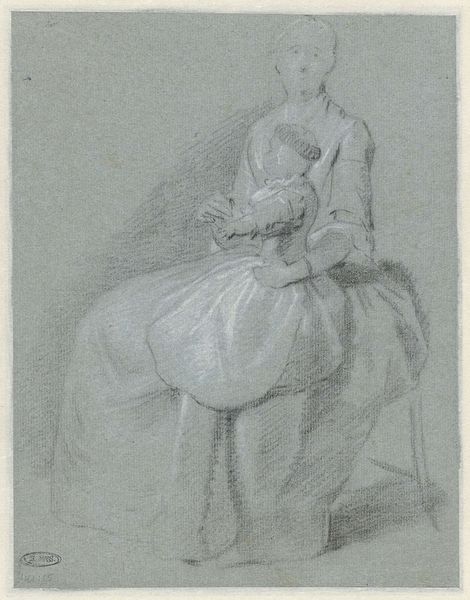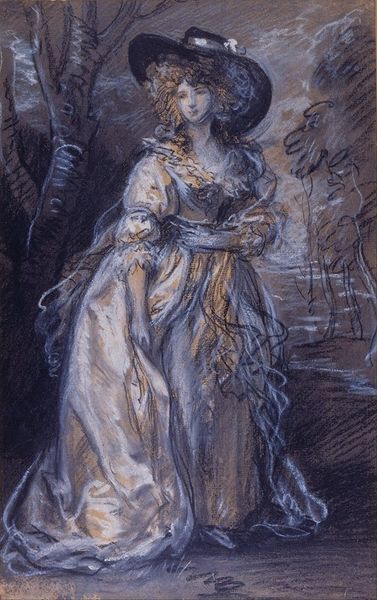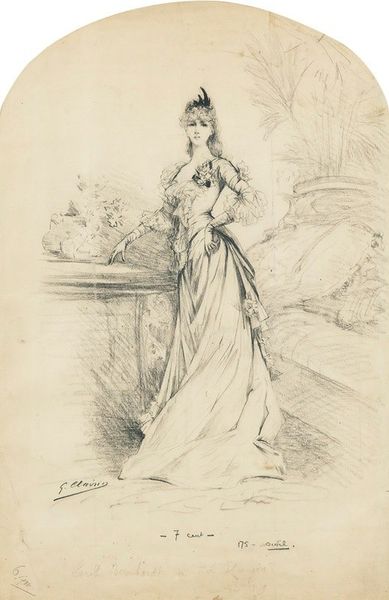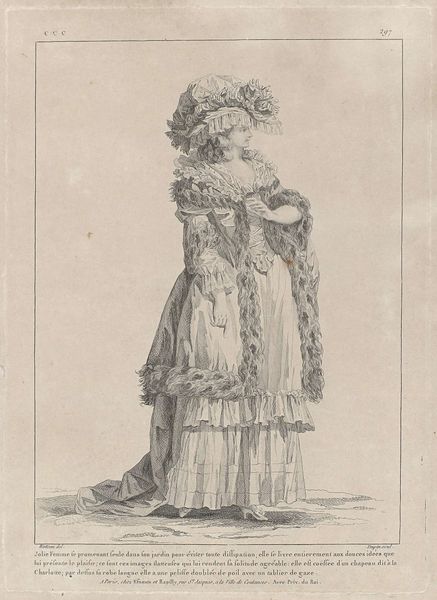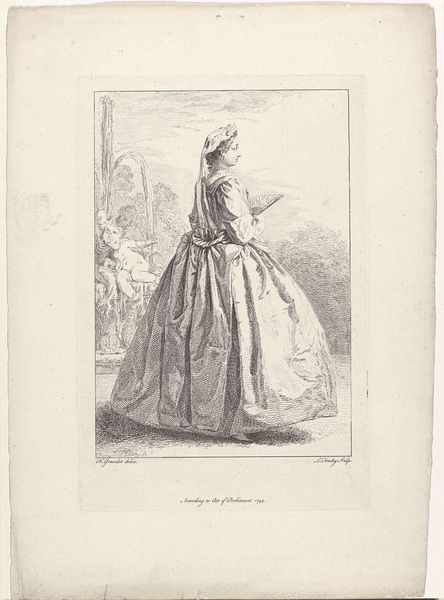
Copyright: Public Domain: Artvee
Editor: This is Elisabeth Louise Vigée Le Brun’s drawing, “Marie Antoinette in a Park,” made around 1780. It's charcoal and pencil on paper. The textures and volume are incredible. I'm immediately struck by the level of detail in the Queen’s gown, but the delicacy and softness is what really catches my eye. How do you interpret this work, particularly its materials and method of production? Curator: What’s fascinating is not only Le Brun’s technique, achieving this remarkable texture with relatively humble materials, but also the social implications of its making. Consider the labor involved in creating the Queen’s dress, all those layers of fabric and lace rendered here in painstaking detail using charcoal and pencil. Think about the hands that spun the thread, wove the fabric, and assembled the garment. Editor: So, you're saying the drawing, even as a "simple" sketch, hints at a vast network of production? Curator: Exactly. The drawing itself becomes a site of labor. Le Brun's labor, obviously, but also implicitly referencing the labor that produced the spectacle of Marie Antoinette's image and status. The use of drawing, often seen as preparatory or less ‘important’ than painting, can be seen as subversive in its own way. How does elevating this craft, drawing, change our understanding of portraiture at this time? Editor: I never thought about it that way! It challenges the established hierarchies of art forms themselves. It's incredible to think of drawing and all its social connotations. Curator: Indeed. Le Brun utilizes humble materials to depict excessive consumption, prompting us to reflect on both. Thank you! This reminds me to focus on materials. Editor: And I've learned to look beyond the subject to see the labor that created it.
Comments
No comments
Be the first to comment and join the conversation on the ultimate creative platform.
